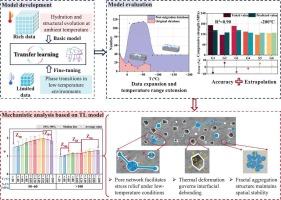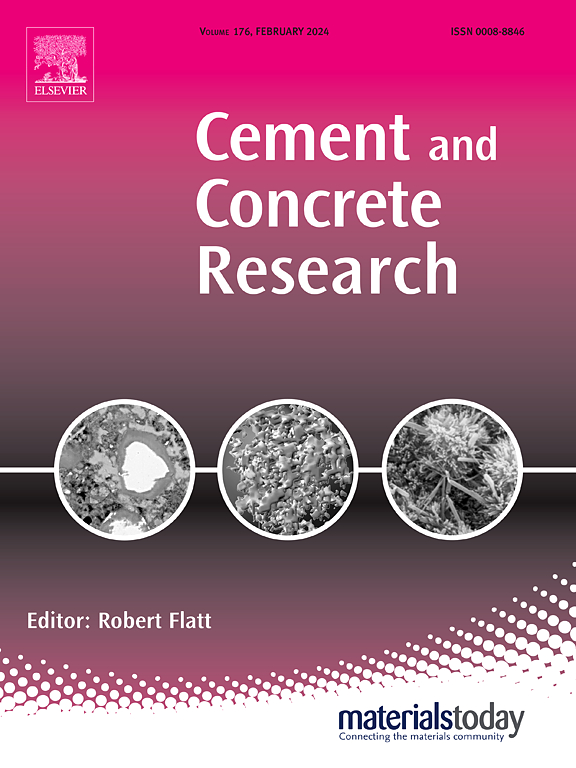低水/粘合剂水泥基复合材料低温冻结机制的迁移学习驱动范式
IF 13.1
1区 工程技术
Q1 CONSTRUCTION & BUILDING TECHNOLOGY
引用次数: 0
摘要
数据的稀缺性和分散性制约了低温混凝土性能的准确评价,阻碍了低温混凝土微观结构演变的研究。该研究首先开发了一个基于物理的迁移学习框架,用于预测低水/粘合剂水泥基复合材料(LWCC)在宽温度范围内的行为,并揭示了耦合的宏观-微观冻结机制。结果表明,迁移学习通过整合水化和冻结特征,有效克服了数据稀缺性,能够准确预测LWCC低温性能(R2 > 0.90)。该模型具有自适应能力,可将其适用温度范围从0 ~ - 80℃的训练范围扩展到- 196℃。在数据驱动模型的基础上,提出了冻结模型,确定了强度增加、损伤-致密平衡、二次强化和界面脱粘阶段,过渡阶段受w/b比和实体骨架结构的影响。这项工作实现了人工智能驱动的低温混凝土的精确预测,为极端条件下的材料设计和冻结机制提供了见解。本文章由计算机程序翻译,如有差异,请以英文原文为准。

A transfer learning-driven paradigm for understanding cryogenic freezing mechanisms in low water/binder cement-based composites
Data scarcity and dispersion constrain the accurate assessment of cryogenic concrete performance and impede the investigation of its microstructural evolution. This study first developed a physics-informed transfer learning framework to predict low water/binder cement-based composites (LWCC) behavior across a wide temperature range and reveal coupled macro–micro freezing mechanisms. The results demonstrated that transfer learning, by integrating hydration and freezing features, effectively overcame data scarcity and enabled accurate prediction of LWCC low-temperature performance (R2 > 0.90). The model exhibited self-adaptive capability, extending its applicable temperature range to be extended from the training range of 0 to −80°C down to −196°C. Based on the data-driven model, a freezing model was proposed, identifying strength gain, damage–densification balance, secondary strengthening, and interfacial debonding stages, with transitions influenced by w/b ratio and solid skeleton structure. This work achieves AI-driven precise prediction of cryogenic concrete, offering insights into material design and freezing mechanisms under extreme conditions.
求助全文
通过发布文献求助,成功后即可免费获取论文全文。
去求助
来源期刊

Cement and Concrete Research
工程技术-材料科学:综合
CiteScore
20.90
自引率
12.30%
发文量
318
审稿时长
53 days
期刊介绍:
Cement and Concrete Research is dedicated to publishing top-notch research on the materials science and engineering of cement, cement composites, mortars, concrete, and related materials incorporating cement or other mineral binders. The journal prioritizes reporting significant findings in research on the properties and performance of cementitious materials. It also covers novel experimental techniques, the latest analytical and modeling methods, examination and diagnosis of actual cement and concrete structures, and the exploration of potential improvements in materials.
 求助内容:
求助内容: 应助结果提醒方式:
应助结果提醒方式:


